This article was co-authored by Chris M. Matsko, MD. Dr. Chris M. Matsko is a retired physician based in Pittsburgh, Pennsylvania. With over 25 years of medical research experience, Dr. Matsko was awarded the Pittsburgh Cornell University Leadership Award for Excellence. He holds a BS in Nutritional Science from Cornell University and an MD from the Temple University School of Medicine in 2007. Dr. Matsko earned a Research Writing Certification from the American Medical Writers Association (AMWA) in 2016 and a Medical Writing & Editing Certification from the University of Chicago in 2017.
There are 8 references cited in this article, which can be found at the bottom of the page.
wikiHow marks an article as reader-approved once it receives enough positive feedback. In this case, 86% of readers who voted found the article helpful, earning it our reader-approved status.
This article has been viewed 172,929 times.
Bee and wasp stings can be uncomfortable and painful but rarely have long-lasting effects. In most cases, home treatment is adequate and the affected area should feel better within a few hours or a day or two. However, it is important to learn the differential treatment for bee and wasp strings and in particular how to identify whether you are having a severe reaction to a sting so you can seek appropriate medical care.
Steps
Treating Stings
-
1Assess your body's reaction to the sting. If you have had multiple stings in the past or this instance has multiple stings, you may experience an allergic reaction to the protein in the venom of the wasp or bee. The level of your reaction will determine whether further treatment or professional medical assistance is required.
- A mild reaction will be localized to the area where you were stung. You may develop a red, raised welt that is approximately ½ inch in diameter. However, some people will experience a red raised area up to two inches in diameter. The area may be itchy. The center is often white where the stinger punctured the skin.[1]
- A moderate reaction includes the localized response you’ll see in a mild reaction, with the addition of swelling of the affected area that extends beyond two inches in the day or two following the sting. Moderate reactions usually peak at 48 hours and last five to ten days.
- A severe reaction to a sting those symptoms in the mild and moderate levels of reaction with chronic hives (urticaria), diarrhea, coughing or difficulty breathing, swelling of the tongue and throat, weak and rapid pulse, reduced blood pressure, loss of consciousness and, potentially, death if not treated quickly. If you experience any of these symptoms, you should call your local emergency number. If you are aware of your allergy and have an epinephrine autoinjector (EpiPen, Auvi-Q or other), you should use it or have someone nearby use it on you. Press the autoinjector against your thigh and hold it there for a few seconds. Await emergency assistance.[2]
-
2Determine what stung you. The initial first aid for a bee or wasp sting will depend upon which insect stung you. In both cases, however, first aid will consist of reducing the discomfort and swelling to the area.[3]
- Wasps do not leave a stinger behind, while honey bees (though not bumblebees) will leave a barbed stinger behind.[4]
Advertisement -
3Administer first aid for stings without a stinger left behind. Wash the sting site gently with soap and water. Use cool water to help reduce the discomfort. Hot/warm water will increase the circulation to the area and increase the swelling. Then, apply a cold pack or ice to reduce swelling. If you are using ice, ensure that there is a towel between the ice and your skin to reduce the potential for cold damage to the skin's surface. Apply the cold pack or ice for 20 minutes once an hour until you feel relief.[5]
- If the area is very itchy, you could take an oral antihistamine like Benadryl to relieve the itching. Alternatively, over-the-counter topical corticosteroid cream can also be used to reduce the histamine response in the area to the sting.
- If you feel pain in the area, you can take ibuprofen (Advil) or acetaminophen (Tylenol) as needed. Follow all dosing instructions on the bottle.
-
4Administer first aid for a sting where the stinger is left behind. First, you need to remove the sting. The stinger should be located in the center of the sting. There will be a venom sac attached which continues to pump out venom into your body after the bee has flown off. Do not pull the stinger out with your fingers or a tweezer. Squeezing the venom pouch will only drive the venom into your body faster. Instead, wash your hands and then scrape your fingernails across the stinger to catch it and pull it out without squeezing the sac. You could also scrape the sting site with a credit card edge to pull out the stinger.[6]
- As with a wasp sting, wash the affected area with soap and water, apply a cold pack or ice to the area to reduce swelling and discomfort. If using an ice pack, place a towel between the ice and your skin to prevent cold damage to the tissue.
- Consider an over-the-counter antihistamine or topical corticosteroids to reduce the inflammation, itching and discomfort from the sting.
-
5Apply some home remedies. For ordinary stings that don’t cause an allergic reaction (see below), home treatment after applying initial first aid is adequate. In most cases, the signs and symptoms associated with the sting should disappear within several hours or a day or two.[7] There are, however, some home remedies that can provide relief from the sting of the sting, so to speak. These include:
- Make a paste of baking soda and water to place over the area. The baking soda helps to soothe the area, reduce the swelling and calm any itching.
- Apply honey to the area to reduce the swelling and discomfort. Honey has natural antibacterial properties.
- Crush a couple of cloves of garlic and apply the juice to the area. Garlic also has natural antibacterial properties.
- Lavender essential oil can help reduce the pain of bee and wasp stings when a couple of drops are applied topically to the affected area.
-
6Monitor your symptoms for a while. In most people the swelling and itching will recede in a matter of a few hours with a minor reaction and home treatment. The more severe the reaction, the longer the symptoms will last. Observe for the following symptoms, which can appear a few minutes or after an hour of the sting and indicate a severe reaction to the sting. Seek assistance if you experience any of them.
- Abdominal pain
- Anxiety
- Trouble breathing and wheezing
- Chest discomfort or tightness
- Coughing
- Diarrhea
- Dizziness
- Hives and itchy skin
- Palpitations
- Slurred speech
- Swelling of the face, tongue or eyes
- Unconsciousness
- Note that there have also been reports of unusual reactions to bee and wasp stings which include persistent symptoms lasting months, serum sickness, encephalitis (swelling of the brain) and secondary Parkinsonism (symptoms similar to Parkinson’s Disease) after an anaphylactic shock. However, these are rare very responses to the sting of a bee or wasp.[8]
Recognizing Stings
-
1Distinguish between a wasp and a bee. Although wasps and bees can be mistaken for each other because both give painful stings, it is important to know and be able to identify the difference between them so you can administer the proper treatment. Bees and wasps are both members of the Hymenoptera (or winged membrane) order of insects, but look different and have different lifestyle habits:[9]
- Their bodies are different proportions. Bees measure about 2.5 cm long and can have entirely black bodies. Others are black or brown with yellow stripes. Bees are also hairy. Wasps, meanwhile, have more narrow waists and smooth, shiny skin. Bees also have two wings, whereas wasps have four wings.
- Bee colonies are much larger with populations over 75,000 while wasps live in colonies of fewer than 10,000. Wasps hibernate through the winter months but bees do not hibernate, although they stay in the hive in the cold winter months. Wasps cannot produce honey but all species of bees can. Bees feed on pollen and plant products while wasps will eat pollen but also other insects.
- Honey bees can sting only once. Their stinger is barbed and stays in your body, causing it to be torn from the bee’s body and left in your skin. Honey bees die after attacking. A single wasp or bumble bee can, however, sting multiple times.
-
2Determine what a sting looks like. Bee stings and wasp stings look very similar for the most part. Unless you see the insect sting you, it may not be apparent which one it was, so knowing what to look for in the sting can be helpful.
- You will experience instant and sharp burning pain at the site of the sting.
- A red welt will appear within minutes.
- A small white spot will be in the center of the welt where you were stung.
- The area may swell slightly around the sting.
- Look for a stinger in the center of the red area to determine if was a honeybee which stung you.
- Cater your treatment based on the sting and your body's reaction to it.
-
3Avoid provoking bees and wasps. Bees are usually docile and will attack only when provoked, while wasps are more naturally aggressive predators. In general, you should stay calm around bees and wasps. Walk away slowly from the area. Swatting at bees and wasps can cause them to sting. Preventing wasps and bumblebees from invading your outdoor space is the best way to prevent being stung.[10] [11]
- Wasps and bumblebees are attracted to sweet drinks, food, and garbage. Take your picnic food out only when you are ready to eat and put it away quickly when finished to avoid attracting these insects. Examine the inside of all drinks and food before eating or drinking to prevent being stung in the mouth.
- Use a tight lid on the garbage to prevent the insects from gathering inside the garbage and swarming you when you open the lid.
- Never work in the yard wearing yellow or white colors or floral prints as these attract the insects. Try wearing the color red because bees and wasps cannot see the color red. Do not wear loose clothing in which bees and wasps can get trapped.
- Minimize any attractive scents, such as perfume, colognes, scented soaps, hair spray and other fragrances.
- Do not walk barefoot. Wasps and bees are commonly found on the ground.
- Do not leave outside lights on longer than necessary at night. The light attracts insects and the predators that eat them — like wasps.
- Do not squash a wasp. The body of the wasp will release a chemical alarm that signals other wasps in the area to attack. Similarly, when a bee stings it releases a chemical that attracts other bees to the area.
Expert Q&A
-
QuestionIf you have a severe reaction how long can you wait to get help?
 Chris M. Matsko, MDDr. Chris M. Matsko is a retired physician based in Pittsburgh, Pennsylvania. With over 25 years of medical research experience, Dr. Matsko was awarded the Pittsburgh Cornell University Leadership Award for Excellence. He holds a BS in Nutritional Science from Cornell University and an MD from the Temple University School of Medicine in 2007. Dr. Matsko earned a Research Writing Certification from the American Medical Writers Association (AMWA) in 2016 and a Medical Writing & Editing Certification from the University of Chicago in 2017.
Chris M. Matsko, MDDr. Chris M. Matsko is a retired physician based in Pittsburgh, Pennsylvania. With over 25 years of medical research experience, Dr. Matsko was awarded the Pittsburgh Cornell University Leadership Award for Excellence. He holds a BS in Nutritional Science from Cornell University and an MD from the Temple University School of Medicine in 2007. Dr. Matsko earned a Research Writing Certification from the American Medical Writers Association (AMWA) in 2016 and a Medical Writing & Editing Certification from the University of Chicago in 2017.
Family Medicine Physician Don’t wait — get medical attention immediately by calling emergency services and/or going to the nearest emergency room, and using an epipen if available. If you are having a severe allergic reaction you will notice your throat swelling and problems with breathing, like wheezing. If you are wheezing seek medical attention immediately.
Don’t wait — get medical attention immediately by calling emergency services and/or going to the nearest emergency room, and using an epipen if available. If you are having a severe allergic reaction you will notice your throat swelling and problems with breathing, like wheezing. If you are wheezing seek medical attention immediately.
Warnings
- Call your local emergency number if you experience the symptoms of a severe response to a bee or wasp sting. In the emergency room you can expect to be treated with epinephrine to reduce the severity of the reaction. This will reduce the histamine response, raise blood pressure, and reduce the constriction in the lungs. Delay in the use of epinephrine has contributed to death when not administered immediately.[12]⧼thumbs_response⧽
References
- ↑ http://www.merckmanuals.com/home/injuries-and-poisoning/bites-and-stings/bee-wasp-hornet-and-ant-stings
- ↑ https://www.epipen.com/-/media/files/epipen/howtouseepipenautoinjector.pdf
- ↑ http://www.clevelandclinicmeded.com/medicalpubs/diseasemanagement/allergy/hymenoptera-venom-allergy/Default.htm#cesec6
- ↑ https://www.orkin.com/pests/stinging-pests/bees/how-to-tell-honey-bees-and-wasps-apart
- ↑ https://www.aad.org/public/everyday-care/injured-skin/bites/treat-bee-sting
- ↑ https://www.orkin.com/pests/stinging-pests/bees/how-to-tell-honey-bees-and-wasps-apart
- ↑ http://www.mayoclinic.org/first-aid/first-aid-insect-bites/basics/art-20056593
- ↑ http://dermnetnz.org/arthropods/bee-and-wasp-stings.html
- ↑ https://www.orkin.com/pests/stinging-pests/bees/how-to-tell-honey-bees-and-wasps-apart
About This Article
To treat yourself after getting stung by a bee or wasp, you should seek medical assistance if you experience abdominal pain, difficulty breathing, tightness in your chest, coughing, diarrhea, dizziness, hives, palpitations, or swelling in your face. If you don't experience any of these symptoms, you can treat the sting at home. First, scrape your fingernail across the stinger if it's still in your skin to pull it out. Avoid squeezing the end of the stinger since it could release more venom into your system. Then, wash the area with soap and water, and apply an ice pack for 20 minutes once an hour to help with the pain. You can also apply a baking soda and water paste over the area, which can help reduce swelling and itching. For tips from our Medical co-author, like how to use other home remedies to treat a bee or wasp sting, read on!
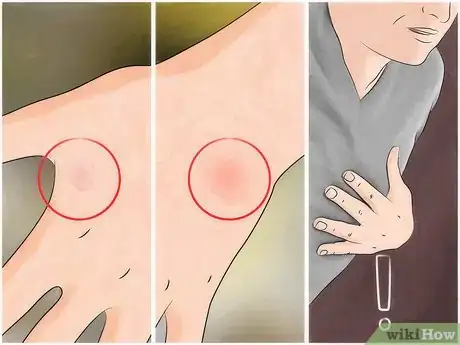
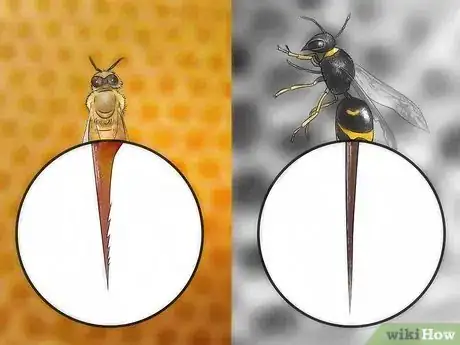
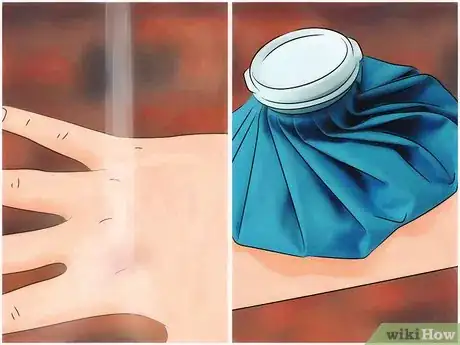
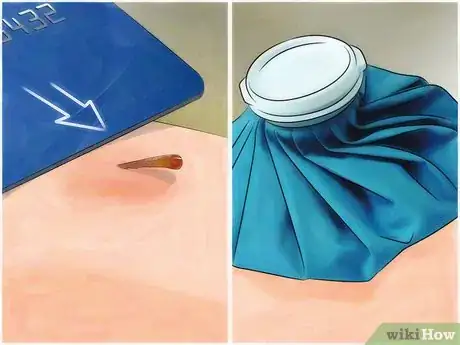
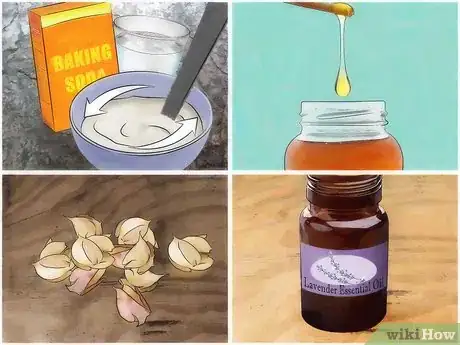
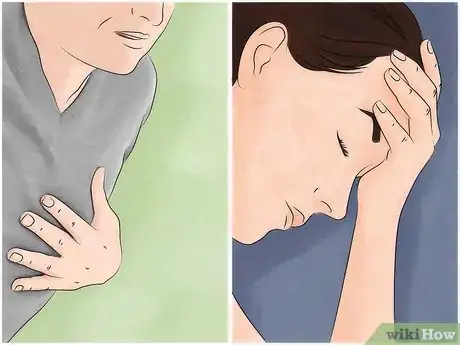
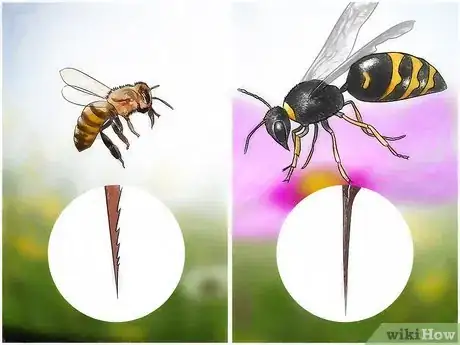
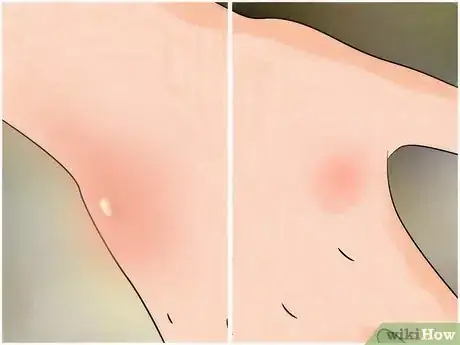
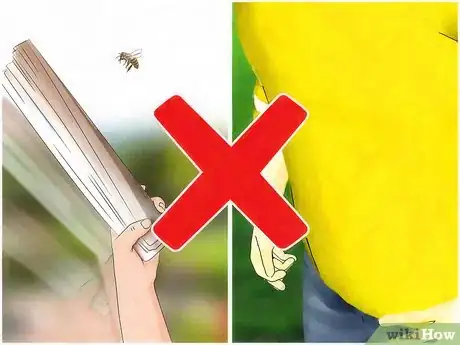
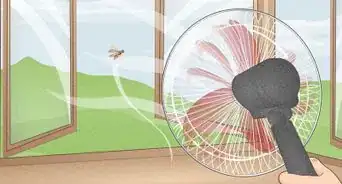
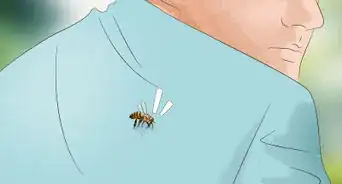

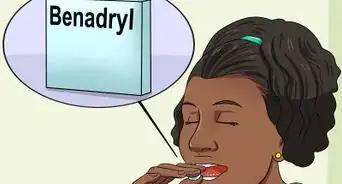
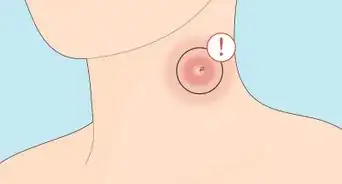
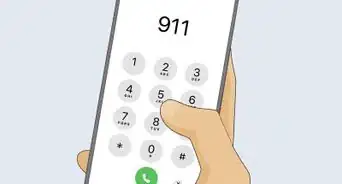
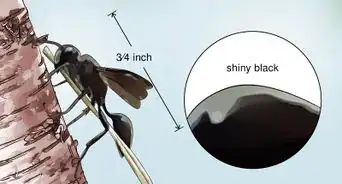
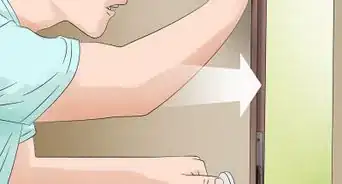
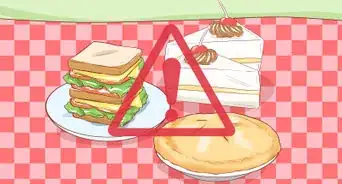
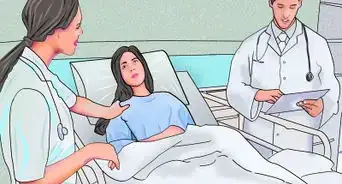
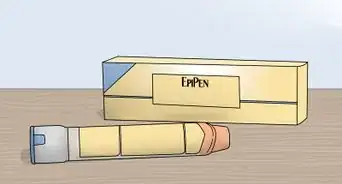
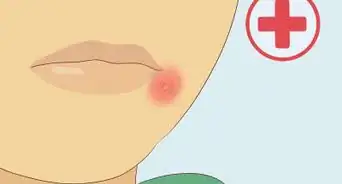
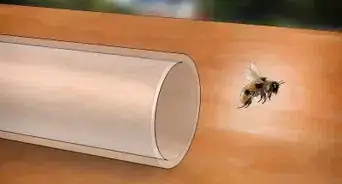
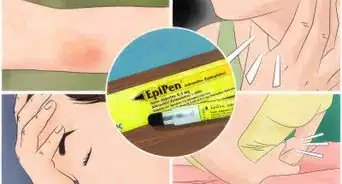










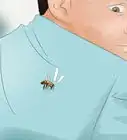

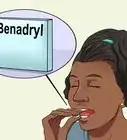



































Medical Disclaimer
The content of this article is not intended to be a substitute for professional medical advice, examination, diagnosis, or treatment. You should always contact your doctor or other qualified healthcare professional before starting, changing, or stopping any kind of health treatment.
Read More...